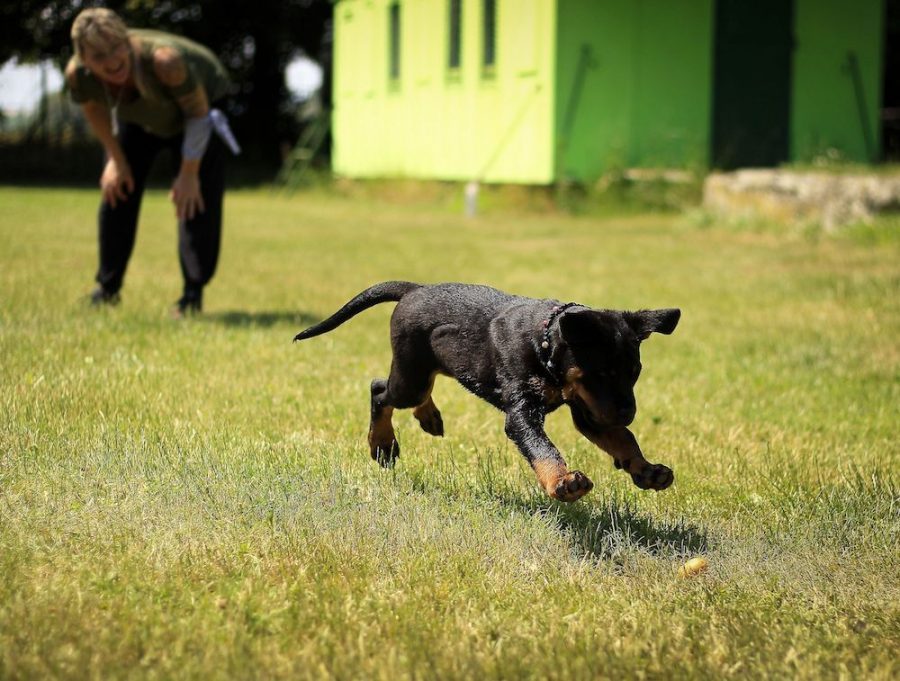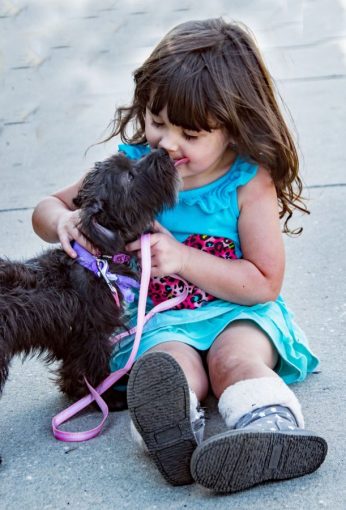It is often said that dogs are man’s best friend because they stand by us in any situation – even in the event of illness. After the start of the Serena project, more and more people suffering from diabetes decide to be assisted by their pet: they train them to recognize signs of diabetic crises such as hypoglycaemia and hyperglycaemia before they occur (especially at night).
Diabetic response dogs are now a well-established reality. Thanks to their sense of smell, much more powerful than the human one, they are able to recognize the variations in the level of glycaemia of the patient and warn family members or doctors through appropriate signals: in this way, they can save the lives of patients in extreme cases.
If you need to be assisted by a diabetic alert dog, you can contact a specialist centre either to request a specially trained dog or to have your dog trained in the event that you already have one.
Dogs for diabetics: which breeds are the most suitable

The best breeds of diabetic response dogs are distinguished above all by their sense of smell. Through this sense, dogs can intercept changes in blood sugar in the patient and alert him with a specific signal that they learn during the training course.
Considering only this parameter, however, it is not possible to identify a more suitable breed than others as each species has a very developed sense of smell. As a result, what really makes the difference is the dog’s empathy and relationship with the owner. For this reason, it is advisable to train your pet rather than buying a dog with a better sense of smell.
Having said that, it is nevertheless right to specify that some breeds have a natural predisposition for this “work”. However, although dogs with a more developed sense of smell are certainly very suitable, it is essential that they have a particular interest in being in the company of people and that they show a balanced and non-aggressive nature.
Although everyone is free to choose the dog breed they like best to train as an assistance dog, it is better to opt for a medium- to large-sized dog. Indeed, dogs over 50 cm tall are more suitable as they are able to perform more tasks than small dogs. For example, bigger dogs have no difficulty in pressing the light switch or a possible emergency button to call for help – in case the person they assist lives alone.
On the other hand, there are also breeds that are not at all suitable for this task. This is the case with fighting dogs, whose aggressiveness is commonly feared by the majority of people, as well as fearful and insecure dogs, since they are unable to handle the emergency situations for which they would be trained.
Greendogs: which is the best training for dogs for diabetics
Although a few exceptions depending on the character of the individual dog, almost all of our 4-legged friends can become alert dogs for diabetics. In this regard, in northern Italy there are two training centers that offer specific courses to teach pets the basic commands of rescue.
These two centres located in Lombardy provide a wide range of courses to teach various disciplines to your 4-legged friends:
- Greendogs: this centre located in Lecco focuses on dog education courses and Dog Sitter courses. In particular, Dr. Cardillo was one of the first to set up courses to train dogs for diabetics, becoming one of the pioneers in Italy in this field. It is possible – and indeed advisable – to train dogs already integrated into the family: being already fond of the diabetic family member, in fact, they are more likely to learn methods of help and support to the sick owner;
- Greendog Club: this center is located on the shores of Lake San Novo, in the hinterland of Milan. Entirely dedicated to our 4-legged friends, it offers courses to educate dogs by combining discipline and play.

The safest solution for training a diabetic alert dog is to rely on a specialist centre. In fact, only by entrusting your pet to professionals in the field you can get certain results and prepare your dog in the best possible way so that it is able to assist people suffering from diabetes.
Before you go to a training centre, you should make sure that your four-legged friend has the necessary qualities to become a detection dog:
- Friendly: a basic requirement is that the dog loves to be in the company of people and show them all his affection and dedication;
- Tame: dogs for diabetics must have a calm and balanced nature as dangerous situations put their endurance to the test;
- Indulgent: diabetic alert dogs should not fear the presence of other people or animals. In addition, in dangerous situations they must be prepared to suppress any protective instincts so as to allow other people – such as doctors – to approach their owner and save him in an emergency;
- Non-aggressive: anxious and aggressive dogs are not suitable for this task as they would not withstand stress in emergency situations and could attack the people trying to rescue their owner.
With regard to factors such as gender, age and race, these are secondary characteristics that do not affect the basic requirements that define a dog for diabetics.
Dogs for diabetic children
The relationship between dogs and people with diabetes forms the basis of the training path of an assistance dog. It is possible to increase the relationship of trust and mutual affection by working together with the dog and the diabetic person and, in the case of children, also with their families. By building trust, children are able to see their dog as a strong ally as well as a moral support and inseparable friend.

In the case of children, more attention should be paid to training as, unlike adults, children are not self-sufficient and autonomous. For this reason dogs must become a real support, able to guide and help their little owner through this chronic disease.
It is important to remember that dogs have such a developed sense of smell that they are able to memorize smells and perceive their molecules. The smells deriving from particular glycemic conditions are thus recognized by trained dogs, who subsequently warn the person in danger or, in the case of children, his parents so that can they proceed as needed.
By training dogs to recognize smells that indicate hypoglycemia, they are able to react quickly and take some action to even save the life of the assisted child:
- They can use a learned signal to warn the parents of the child in hypoglycemia;
- They can press an emergency button or light switch to warn parents of the danger;
- They can offer comfort to children and their parents by showing affection and loyalty, confidence and strength;
- They can run for sugary drinks or, in serious situations, the emergency kit and, in general, they are able to follow a series of precise commands according to the needs of the assisted child.
This set of features and qualities makes dogs for diabetic children not only faithful friends, but also a support for the whole family.
Find out the Serena Project
The Serena Project is a voluntary non-profit organization born in Verona from an idea of Anna Butturini – suffering from type 1 diabetes – and supported by the Diabetics Association and Diabetics Association of Verona. This experimental project was born with the idea of combining passion for dogs and medicine: assistance dogs are trained to recognize the first symptoms of diabetic crises of patients and to contact promptly the rescue.
The project has achieved extraordinary results from the very beginning: in fact, the well-known research dog instructor Roberto Zampieri has also joined the initiative with great enthusiasm. Through the Serena Project, pets are trained to recognize the smells coming from the owner’s body that suggest a glycemic crisis and to report them to the patient or his family.
Diabetic alert dogs are therefore a fundamental resource for those suffering from this chronic disease. Thanks to the commands they are taught, they are able to recognize dangerous situations and take rescue measures. In the case of nighttime hypoglycemic crises, assistance dogs perform specific actions to wake up the owner, such as jumping on the bed, licking his hands or other learned commands, and then run to retrieve the emergency kit or carbonated drinks.
If the patient with type 1 diabetes lives alone, the dog learns some commands to warn the family about the danger in case of an emergency or to warn medical help. But what is the Serena Project based on? The education of assistance dogs is based on the union between play and work. Every time the dogs respond positively to the commands, the instructor rewards them with a prize: in this way, pets associate “work” with play and positive sensations, and they will be happy to carry out this important task of assisting the owner.
However, it is not possible to train a dog successfully if there is no established relationship of love and trust between the owner and his 4-legged friend. For trainers, in fact, it is essential that pets and patients trust each other – otherwise it will be much more difficult to teach dogs even the simplest basic commands.
Zampieri also claims that it is better to train your pet directly, since the owner has already had the opportunity to build a relationship of friendship. The training period lasts about two years and can take place both at home and in specialized centers: what matters is that there is always the supervision of an instructor – in addition to that of the owner himself.
It is precisely in this way that a lady from Verona has managed to give life, sensing the potential of animals in assisting human beings, to a small non-profit organization that is now successful throughout Italy. Just think that today the association receives requests from patients of all ages – especially by families with diabetic children. In fact, parents are extremely enthusiastic about the idea that their pet can watch over their children’s sleep.
